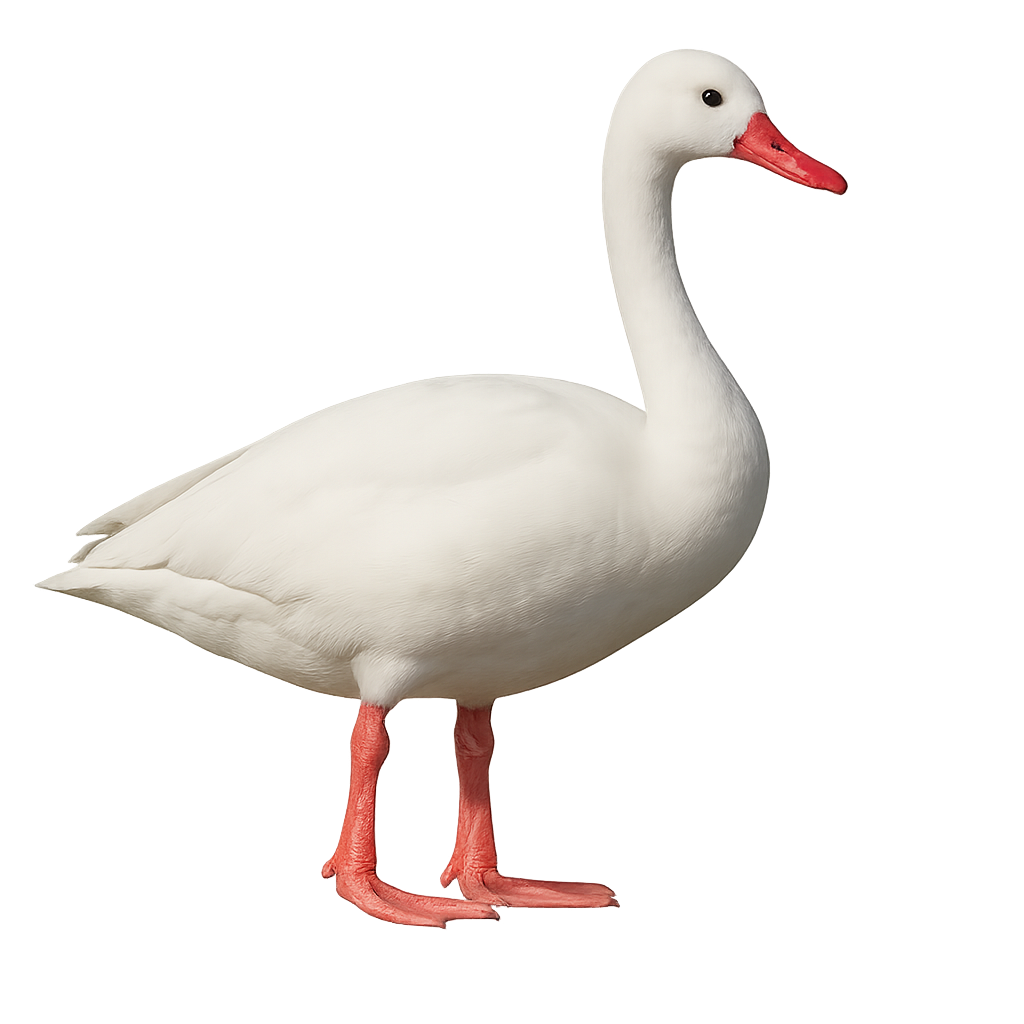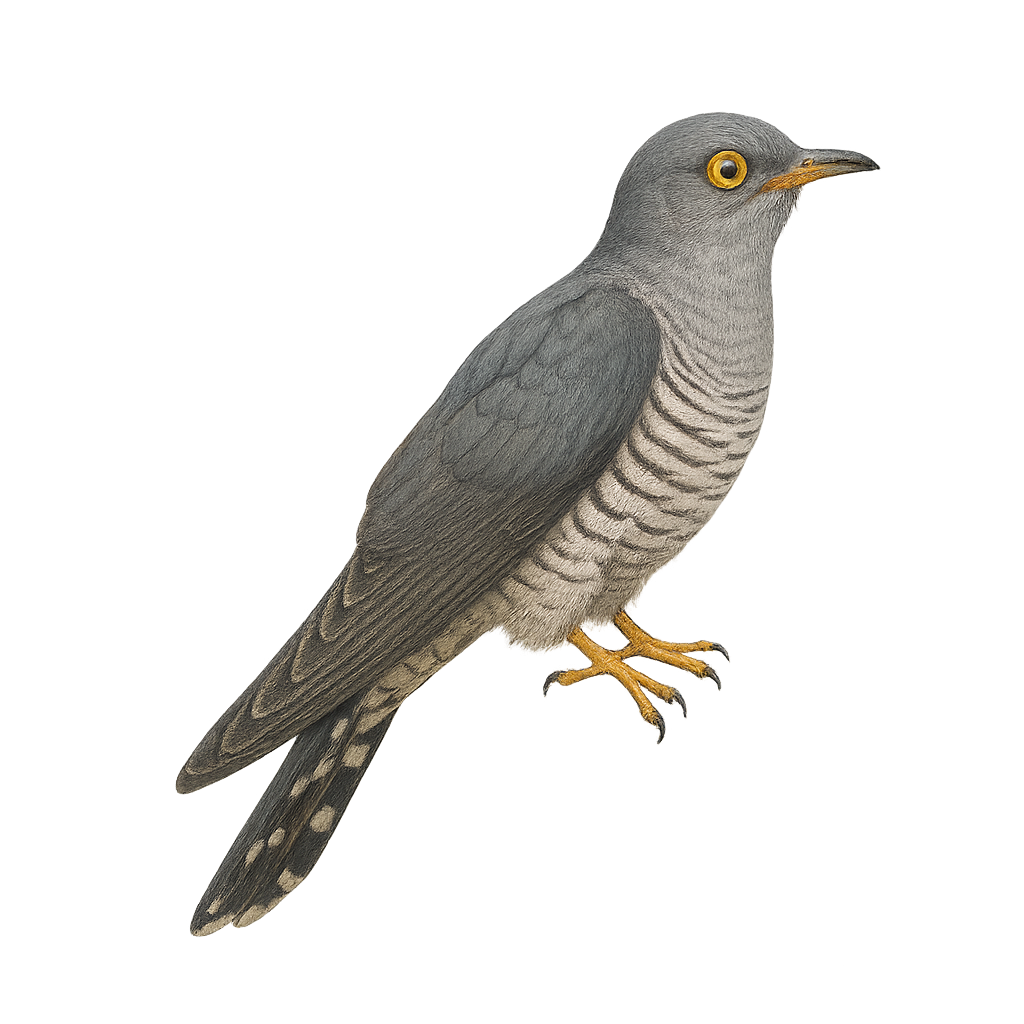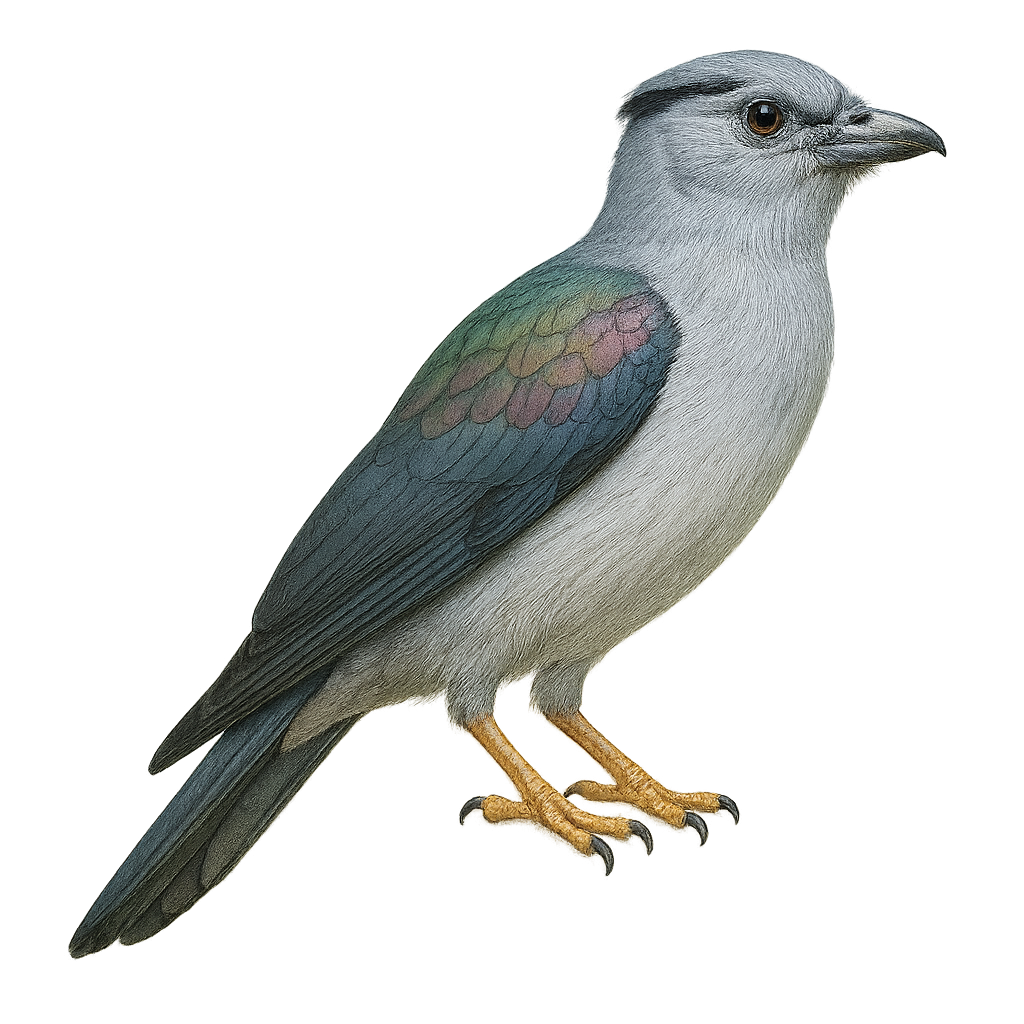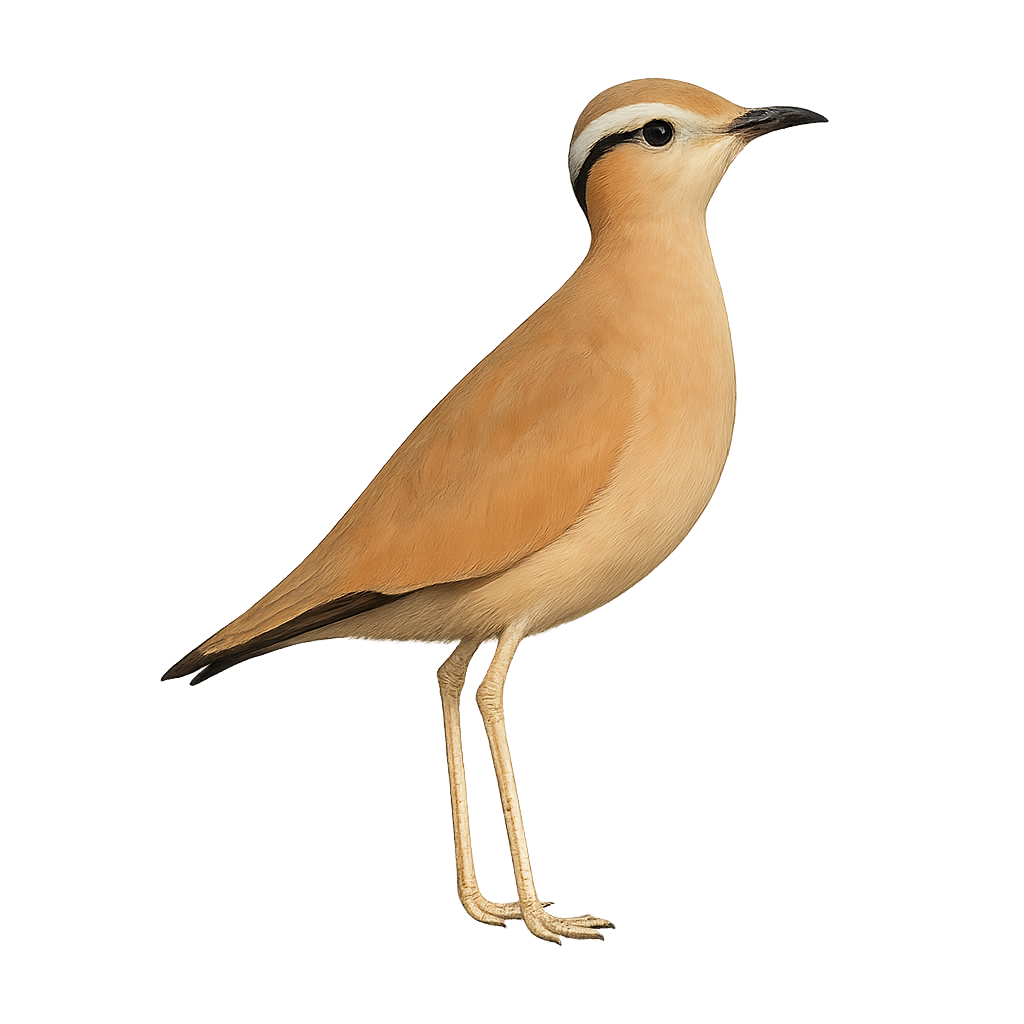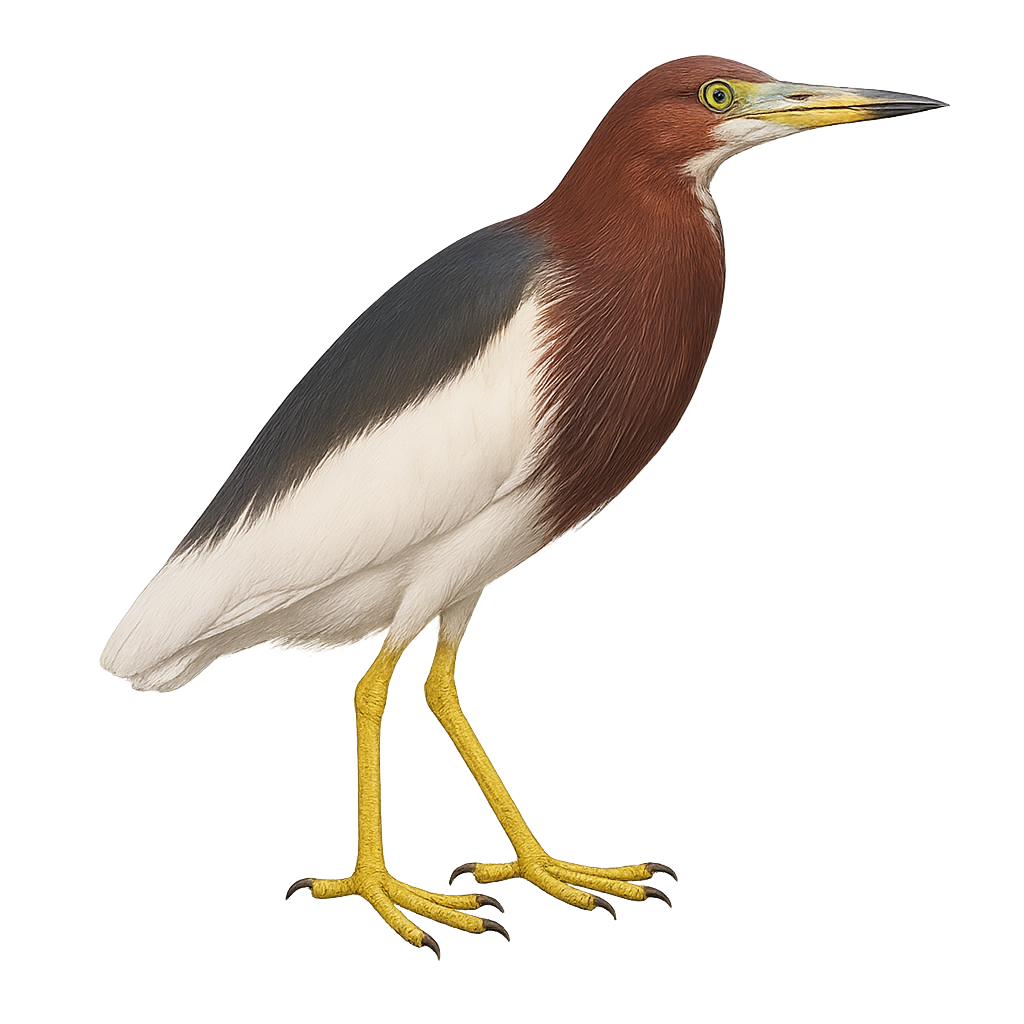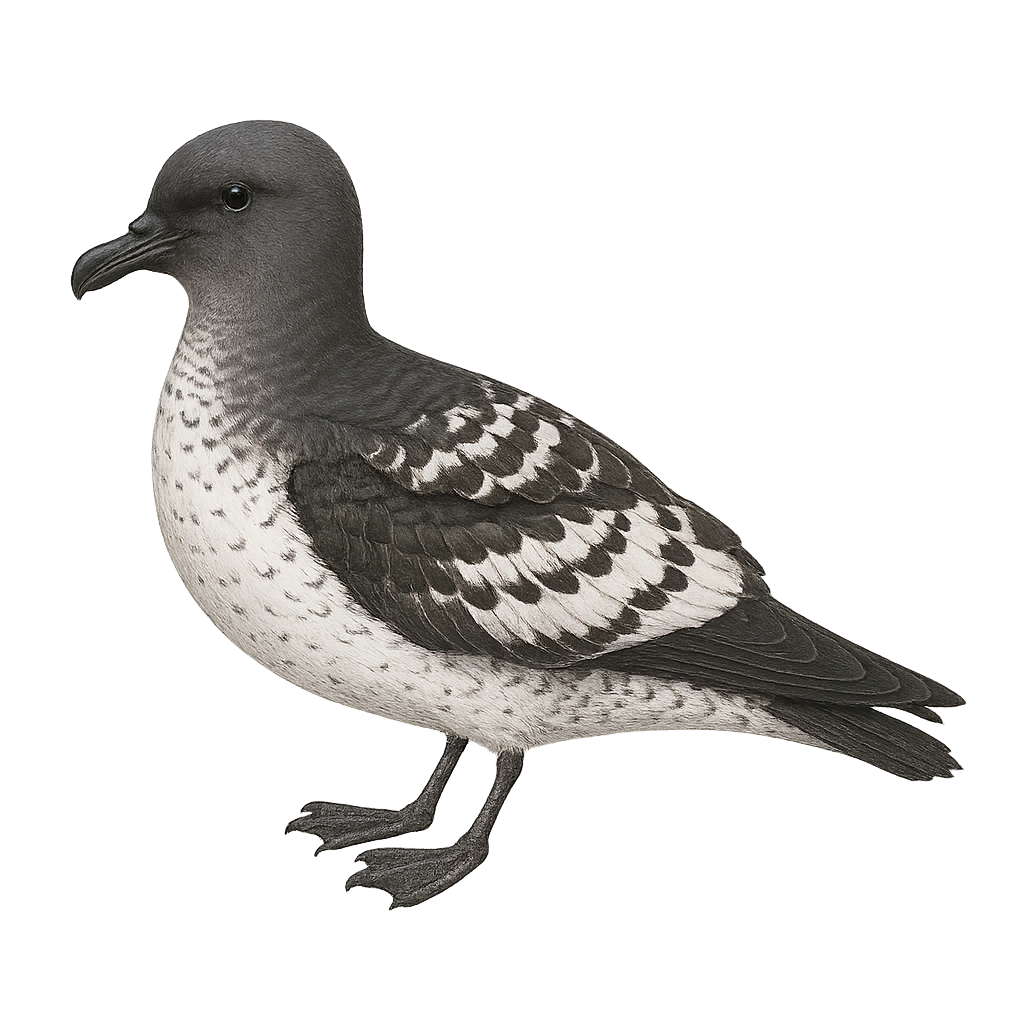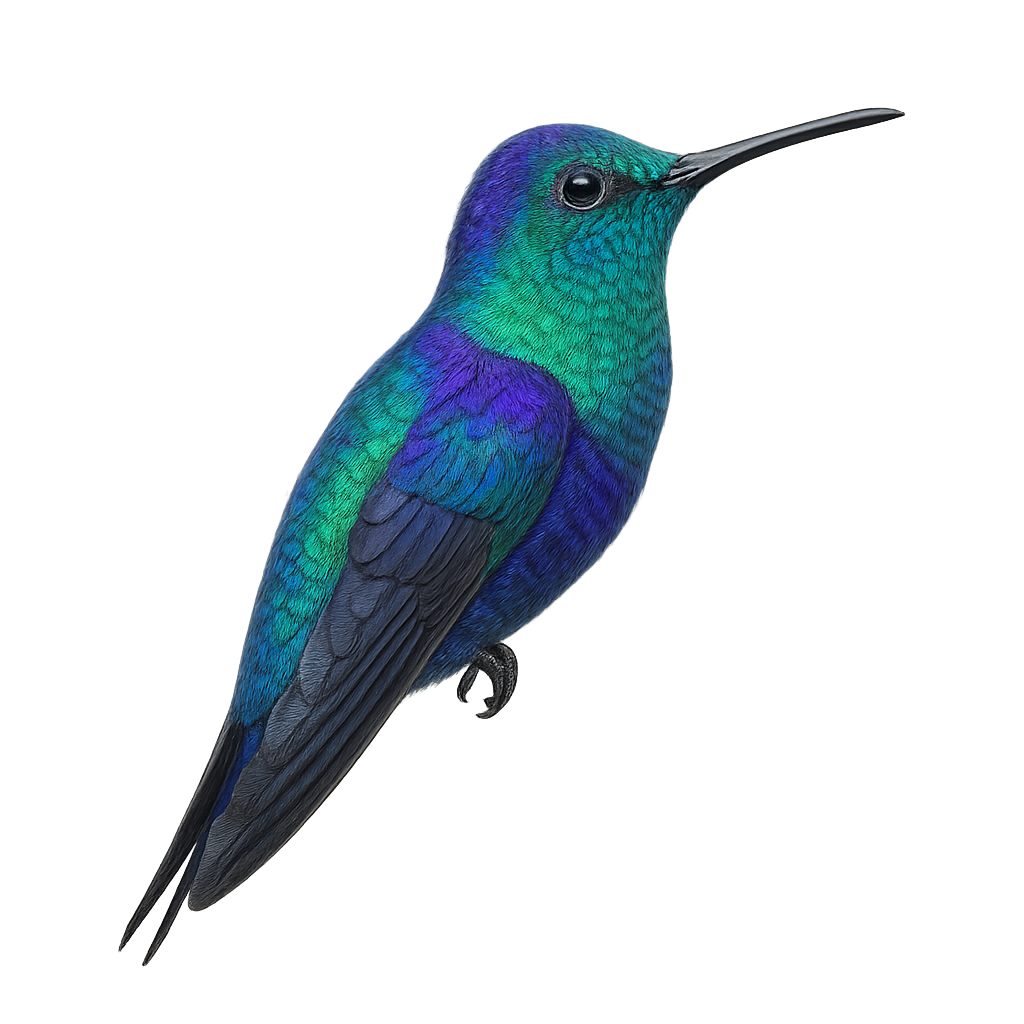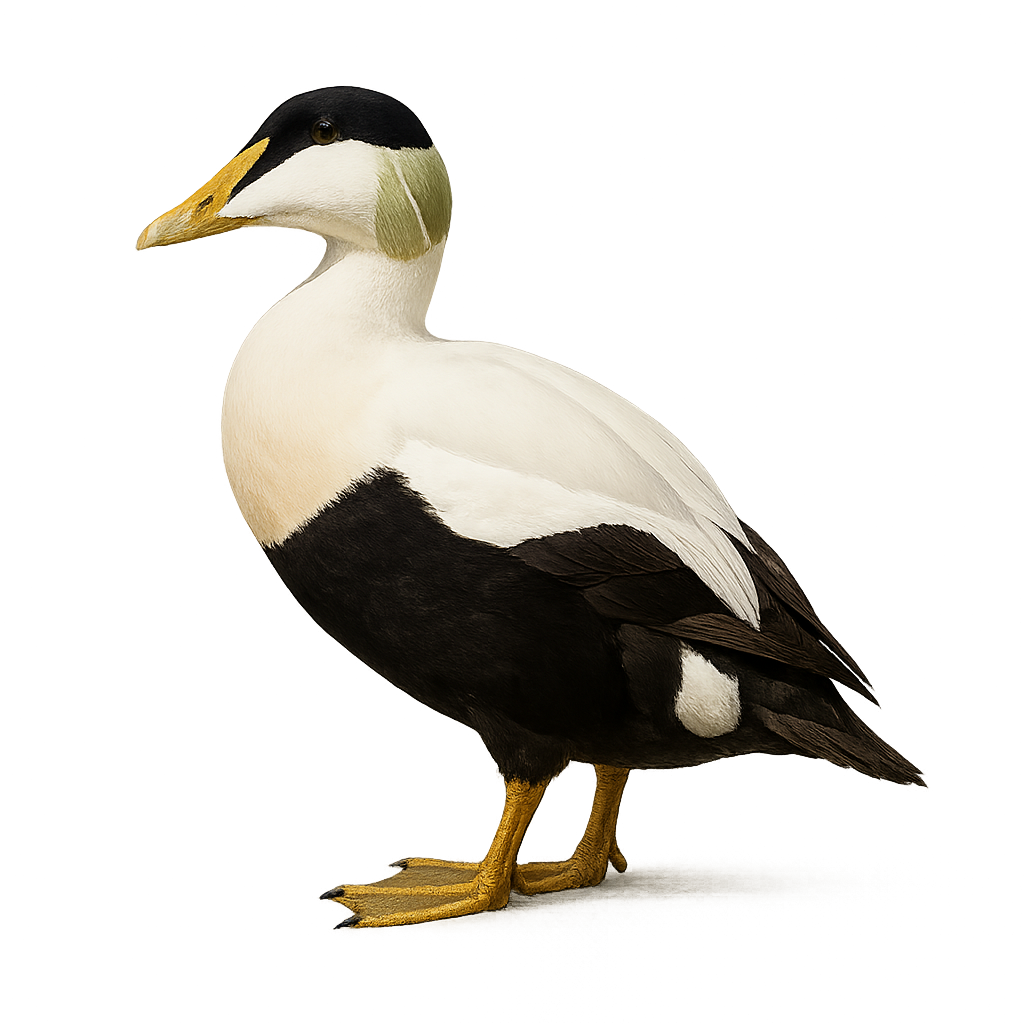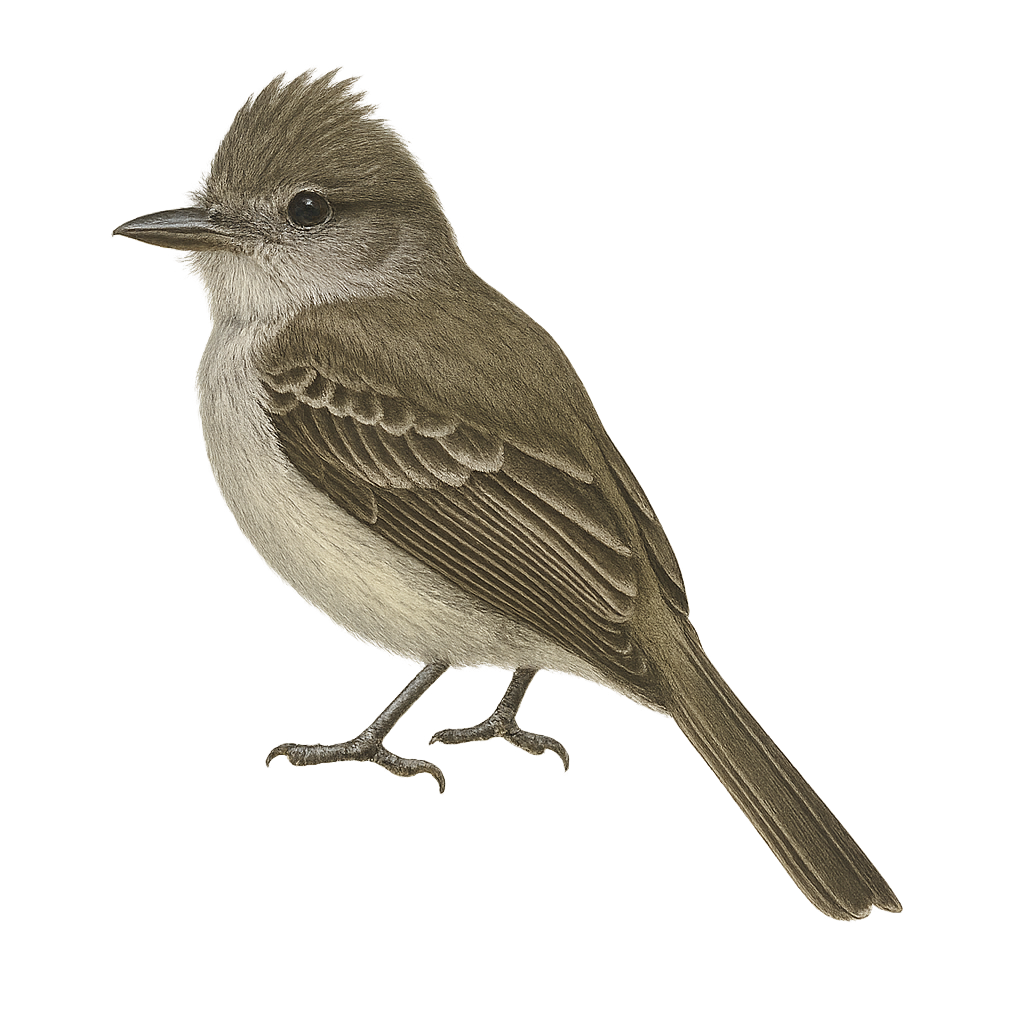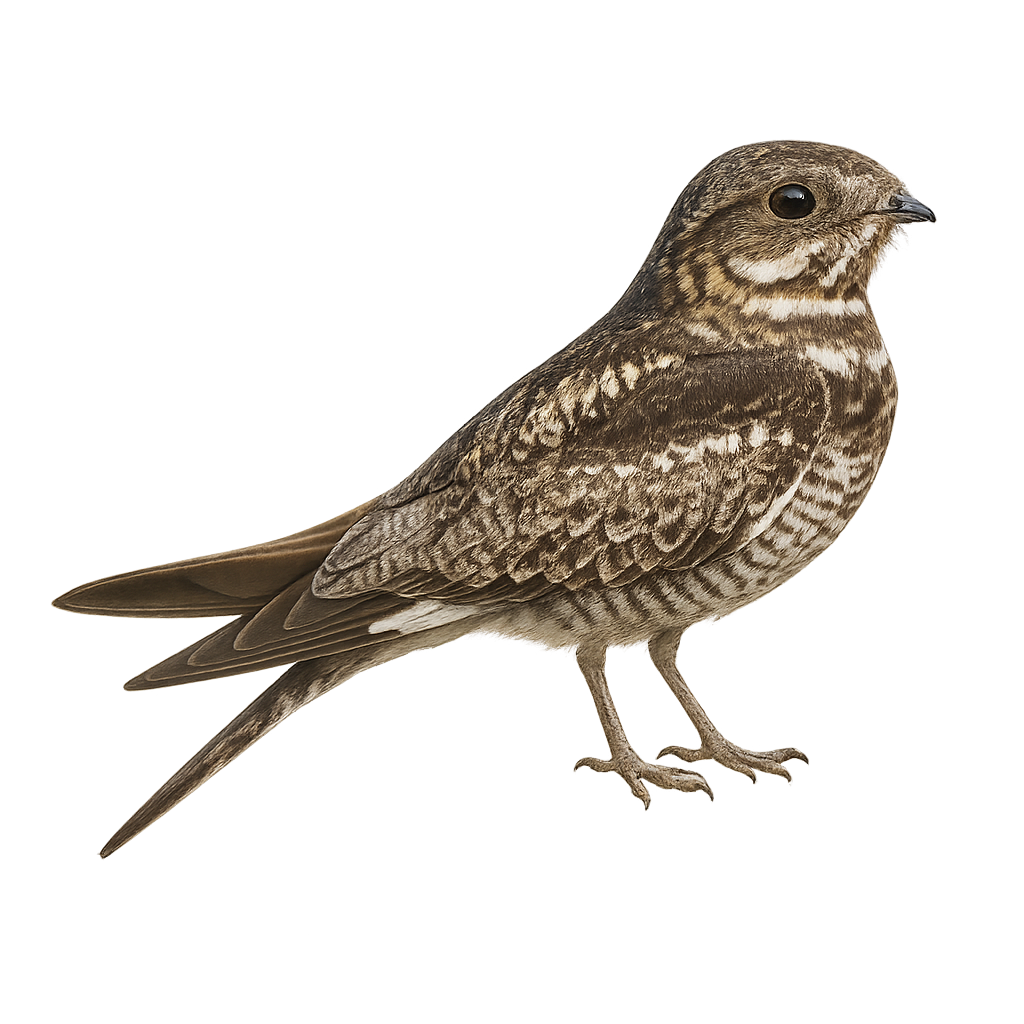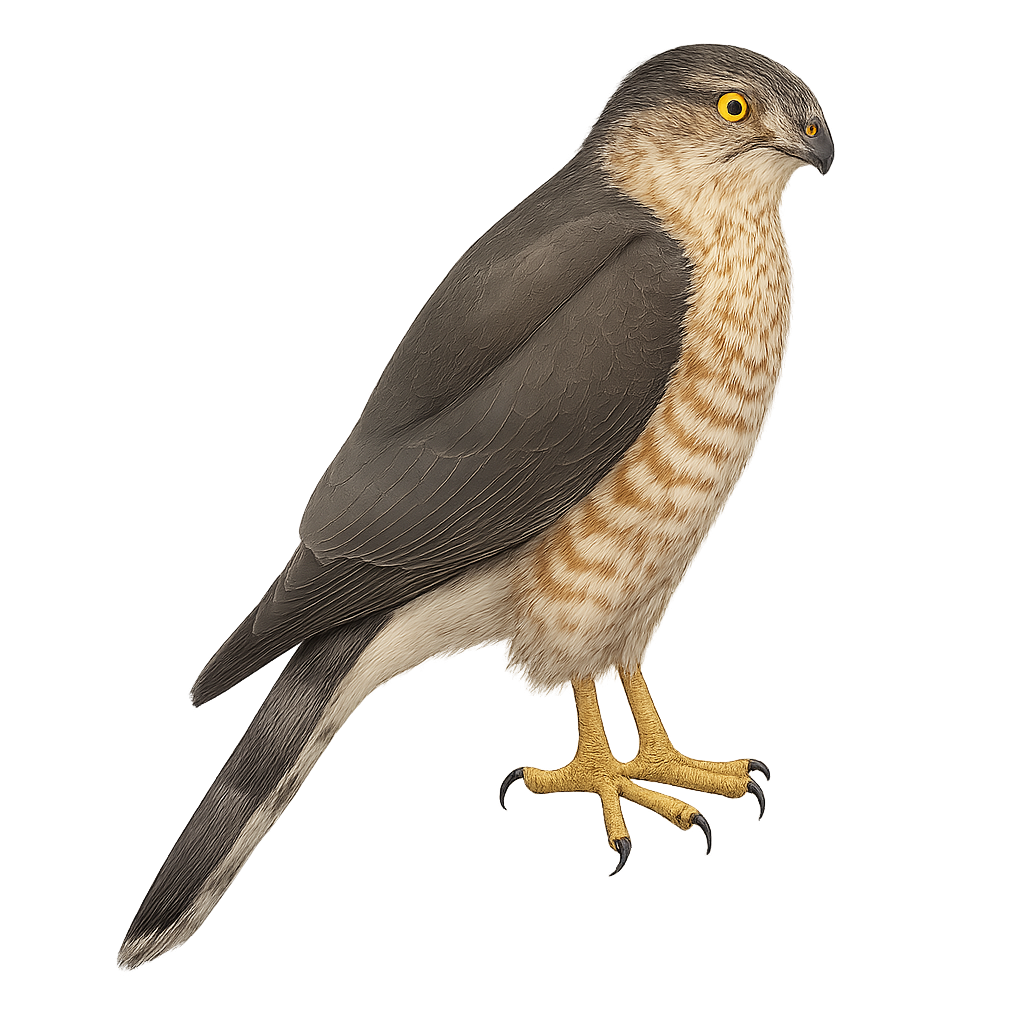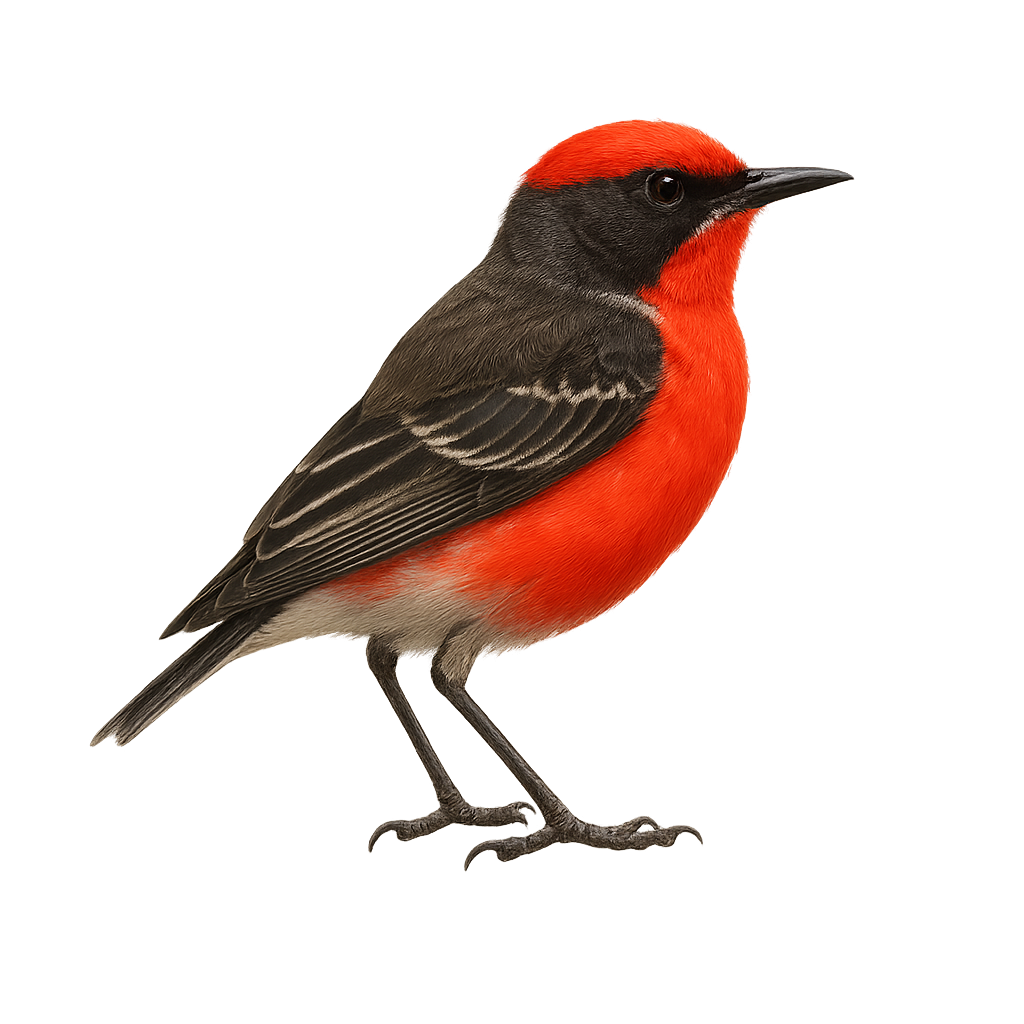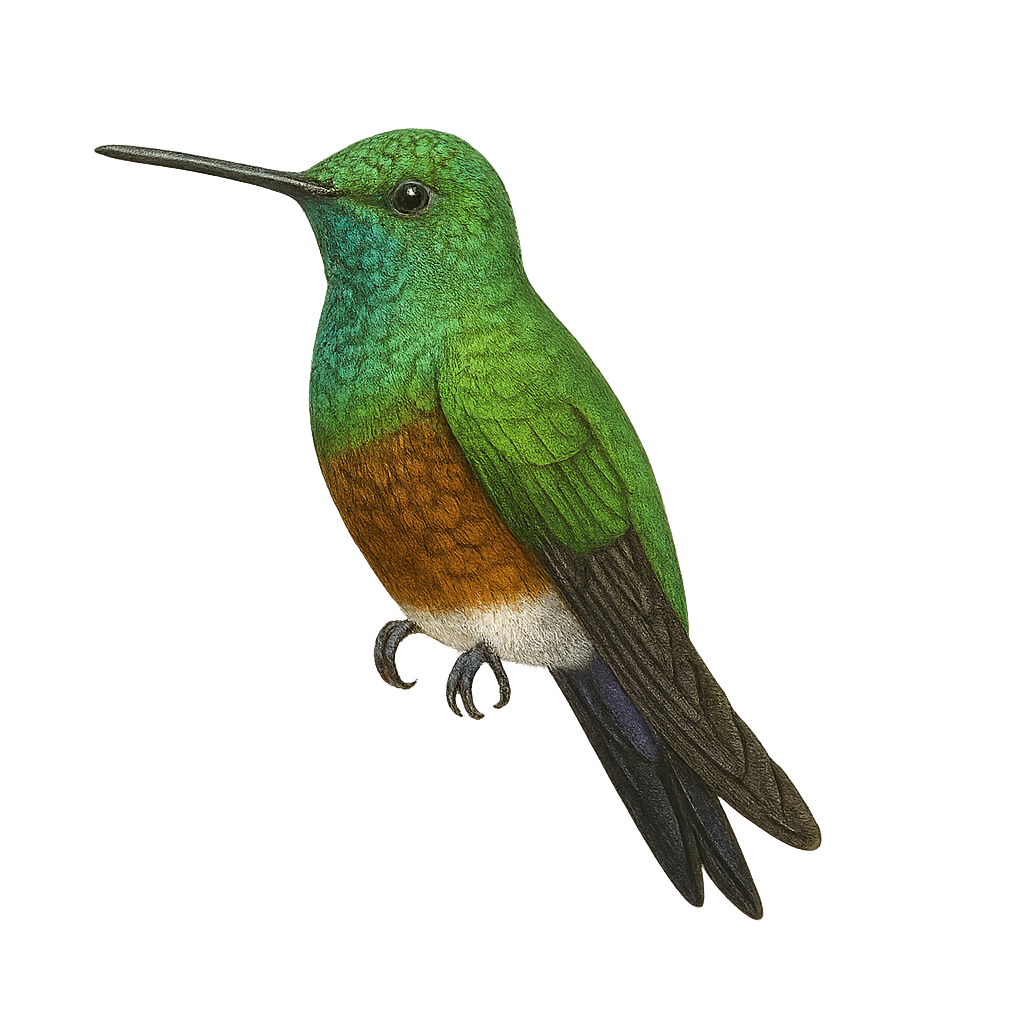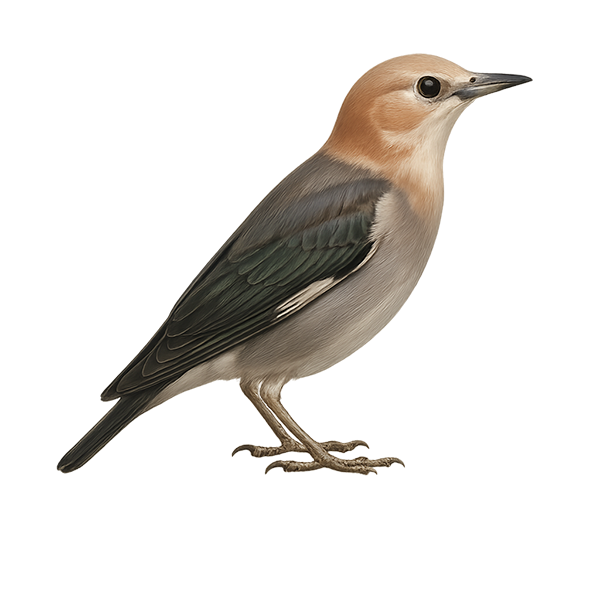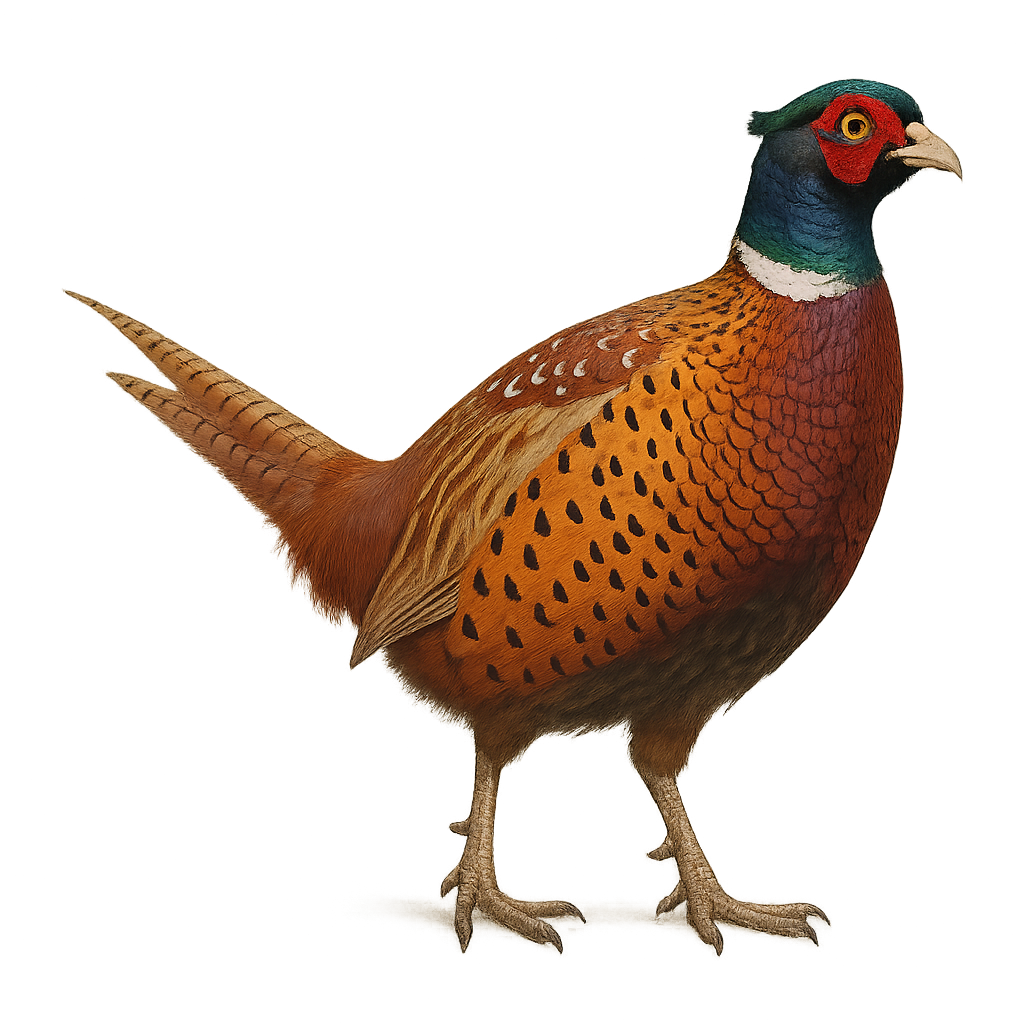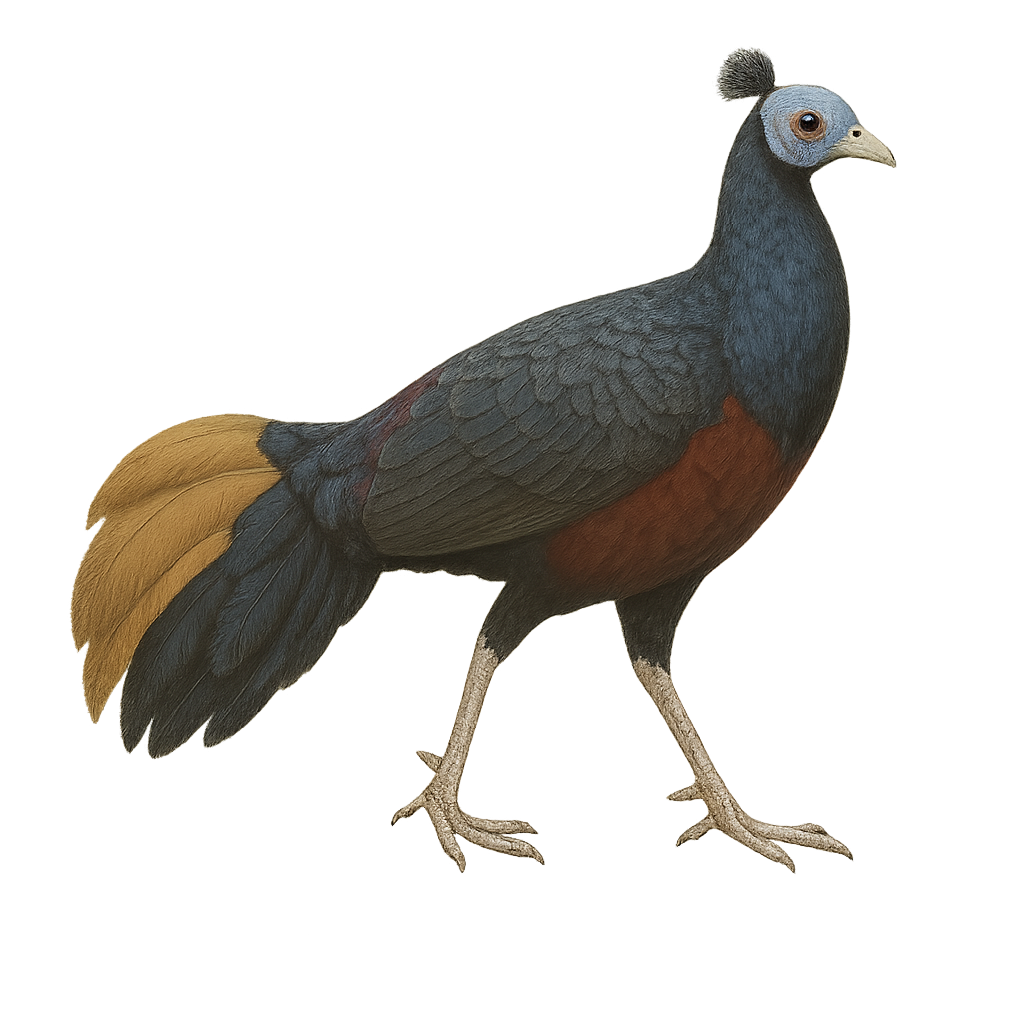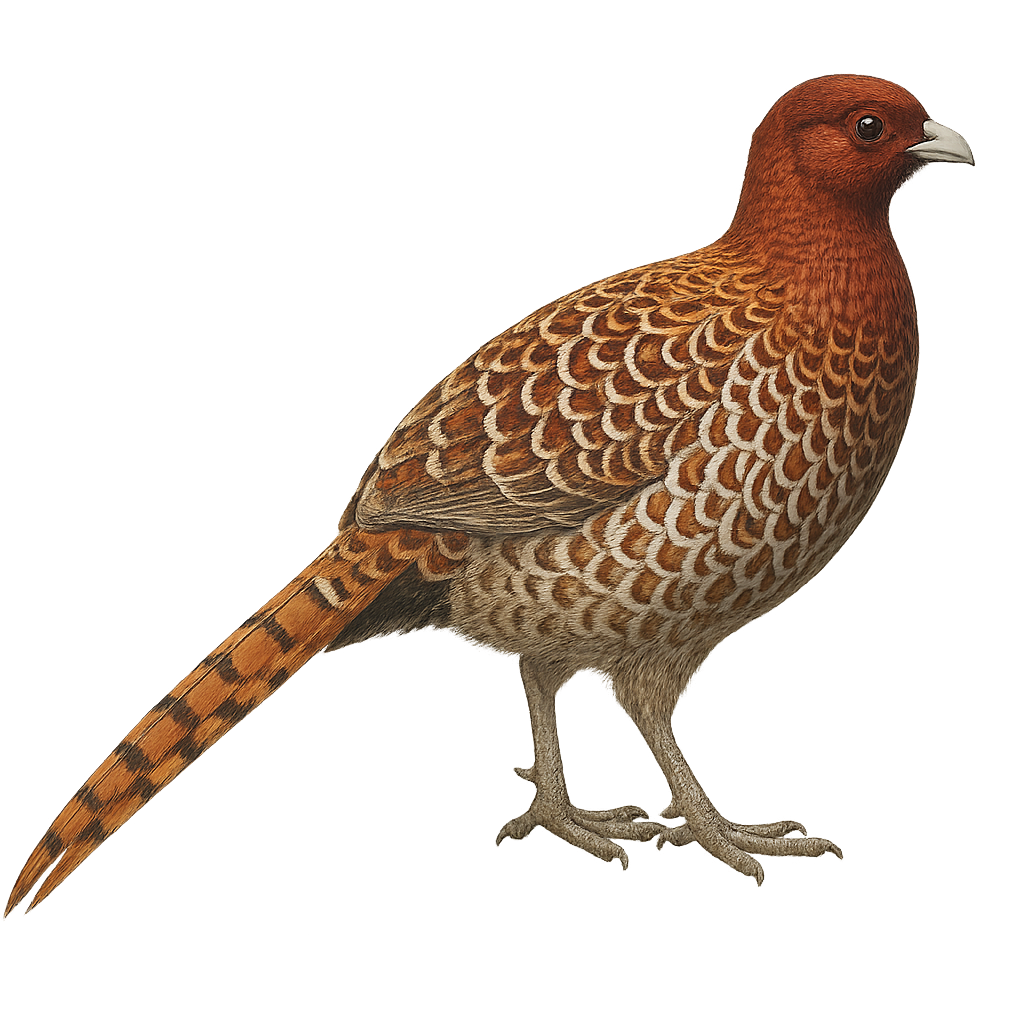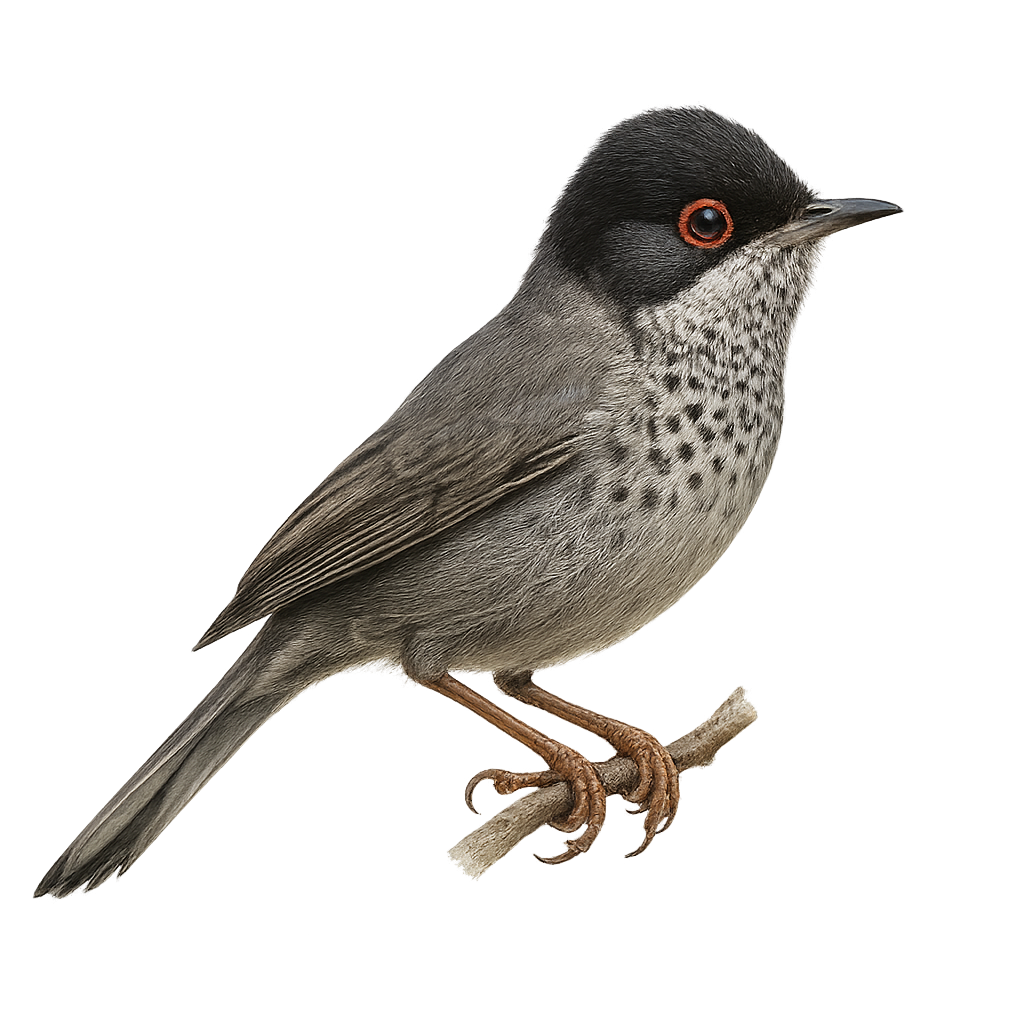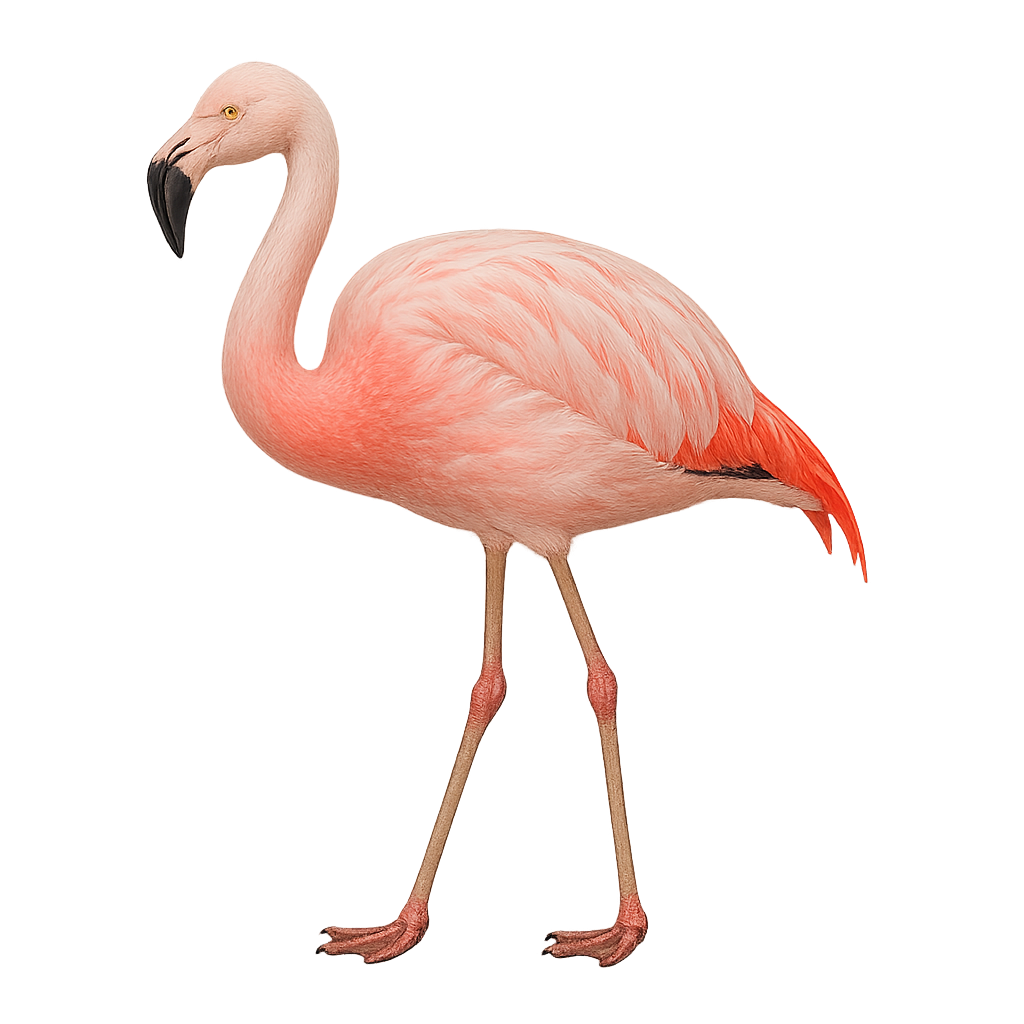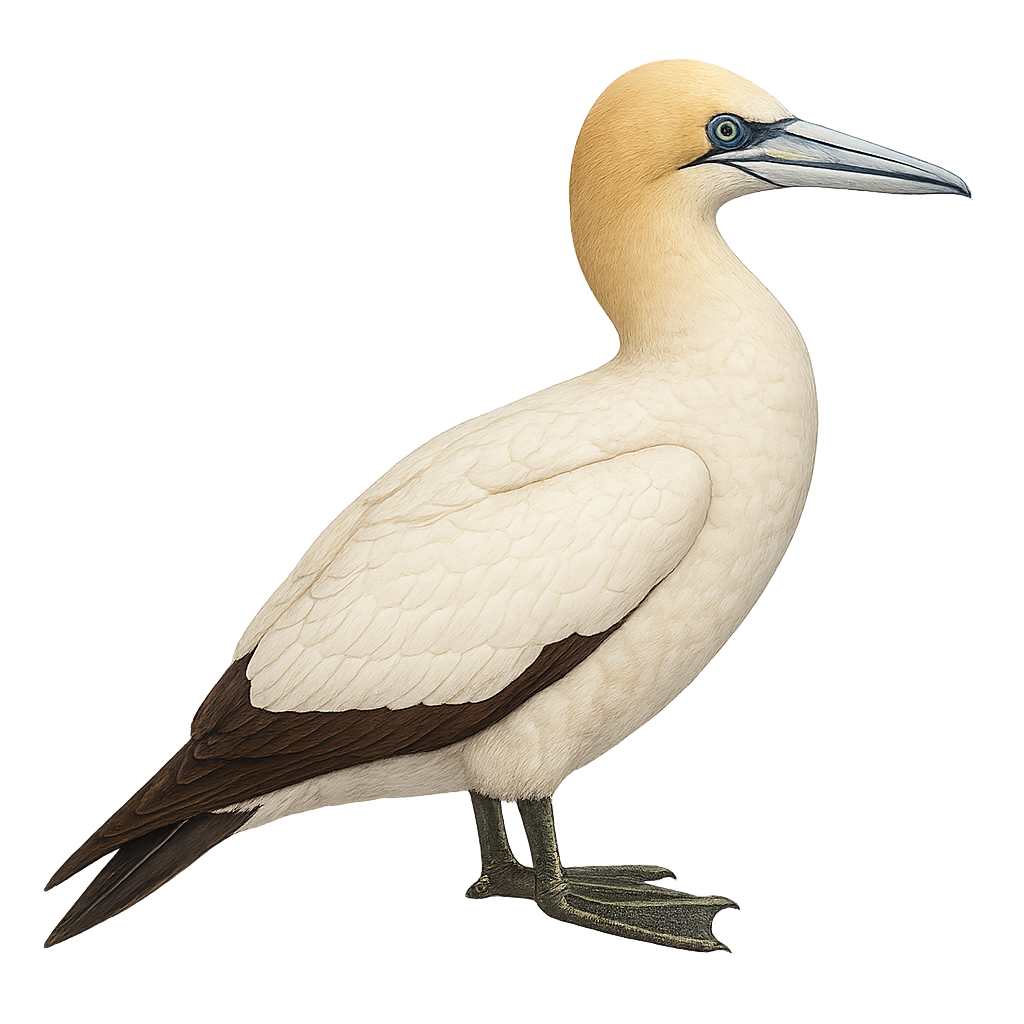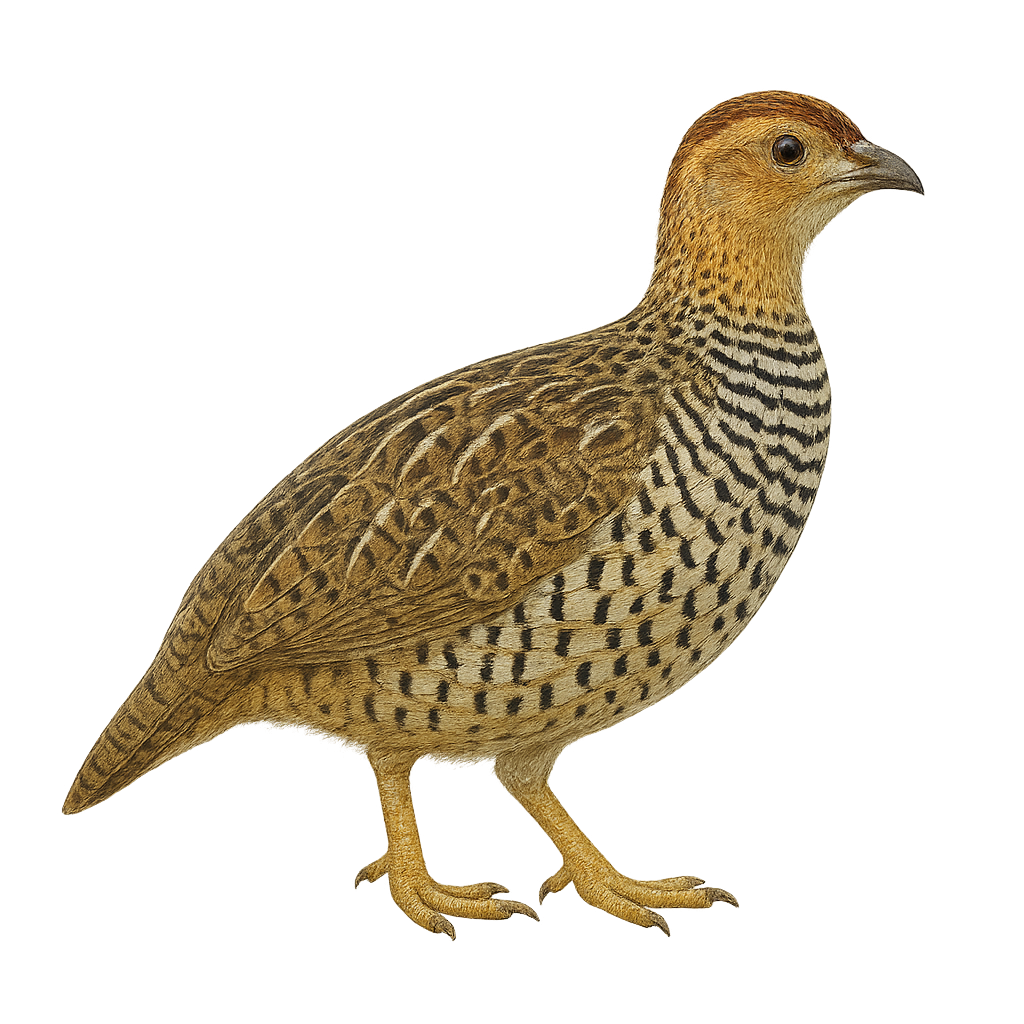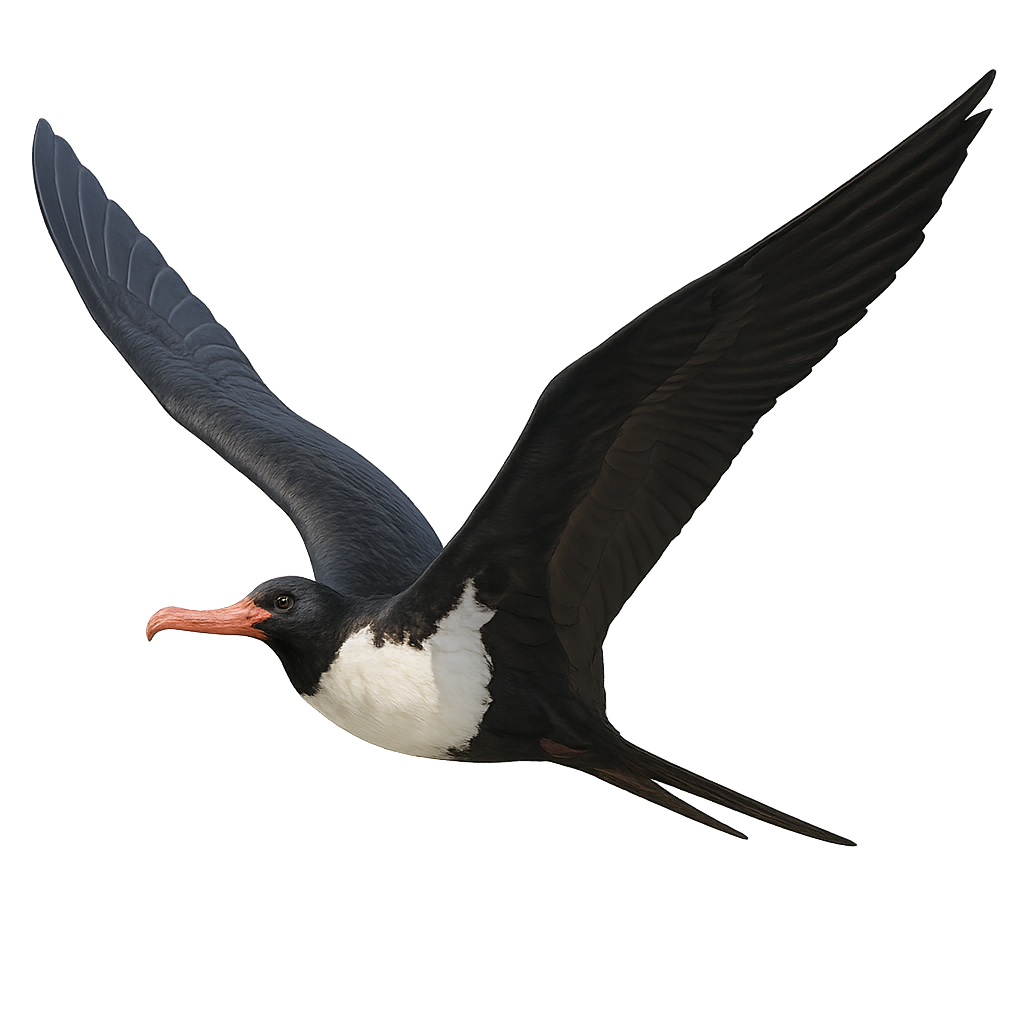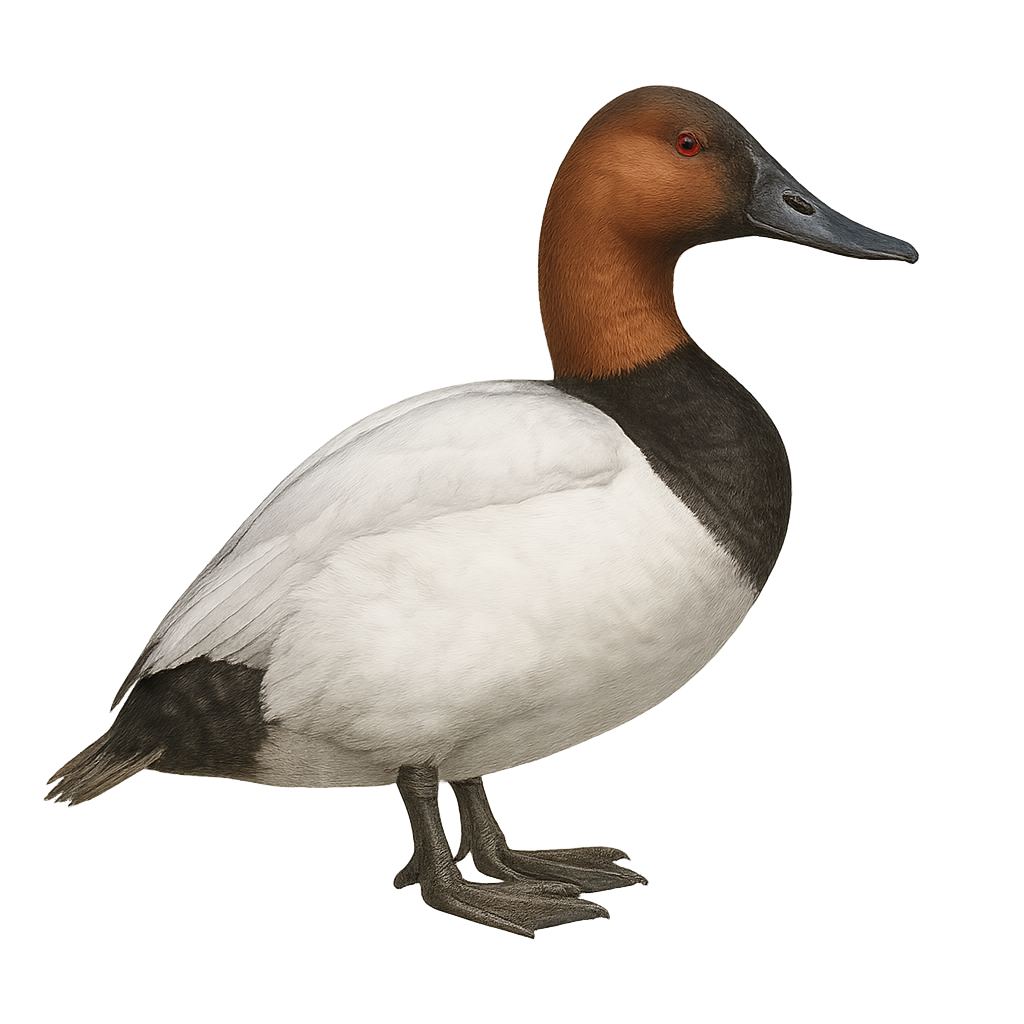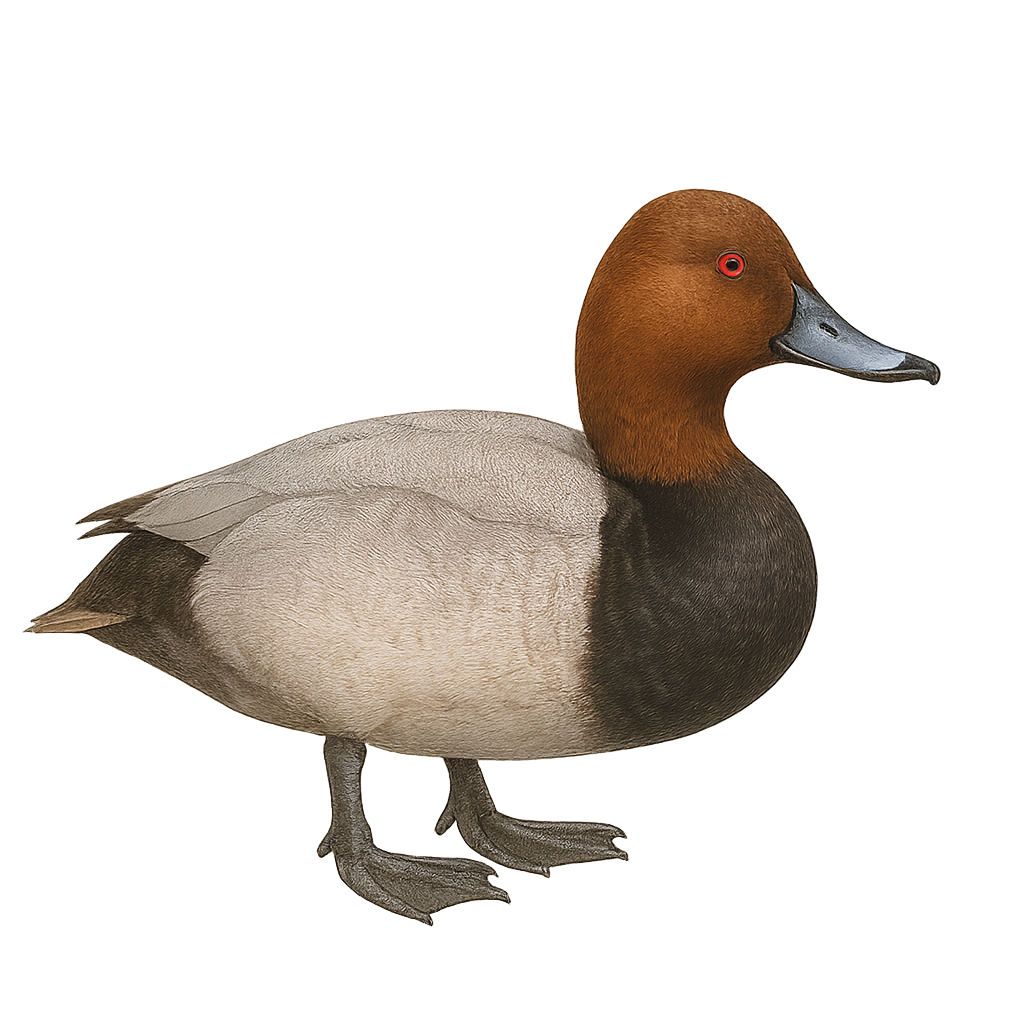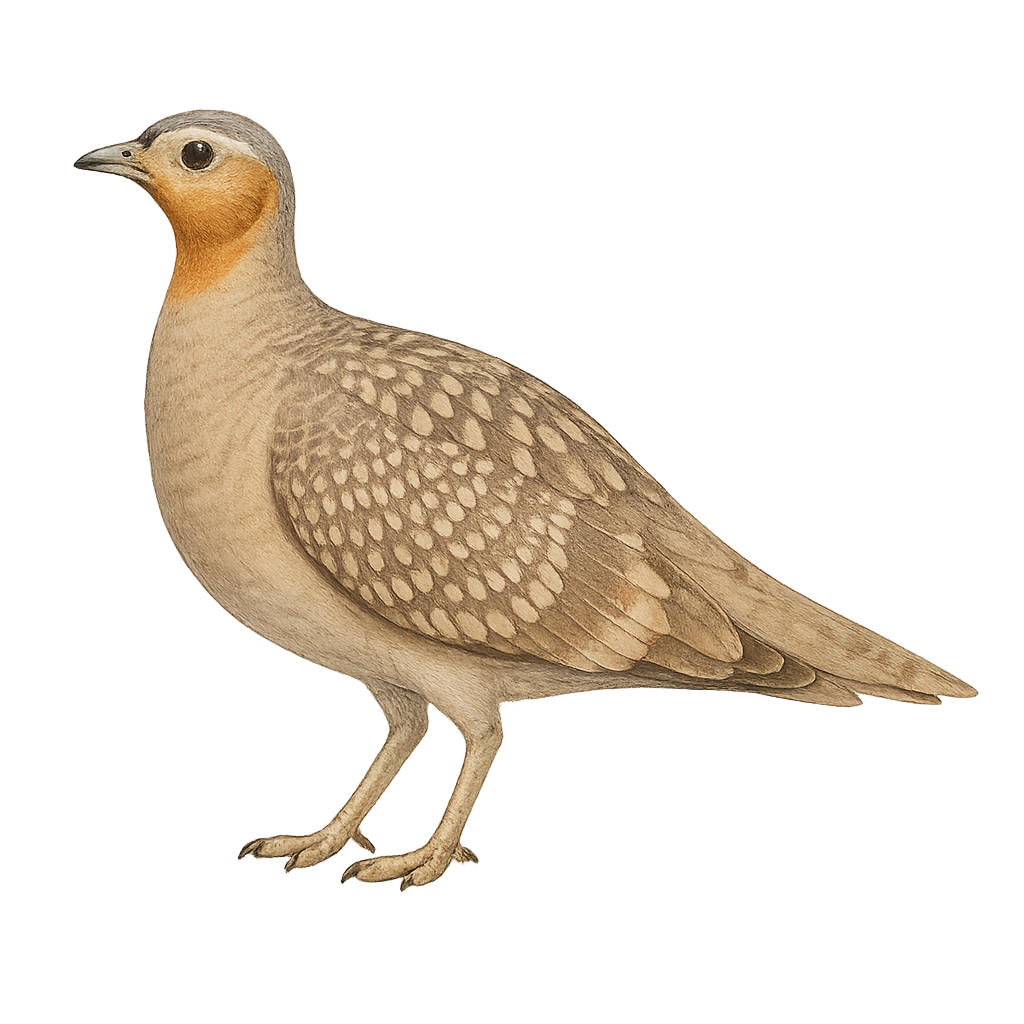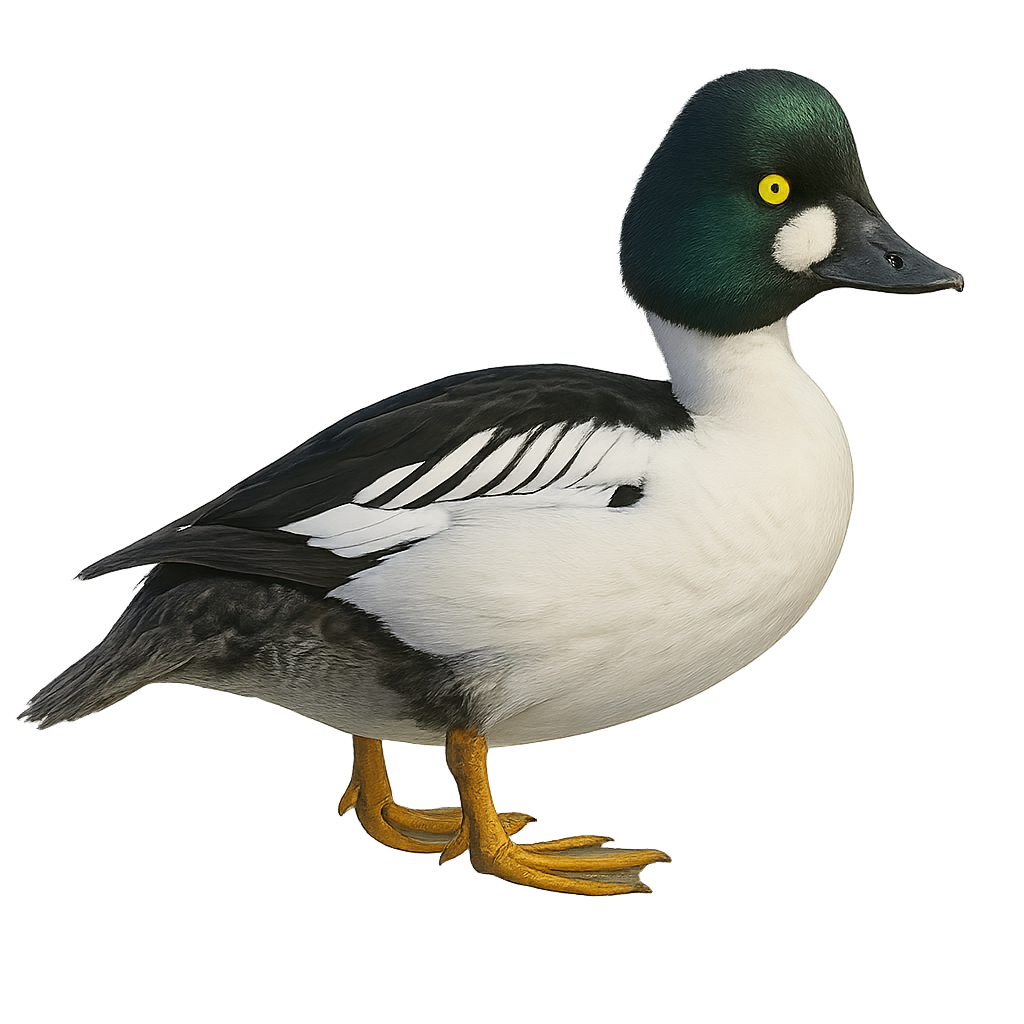The Coscoroba Swan is a medium-sized waterbird often mistaken for a swan due to its pure white plumage and graceful long neck. It is distinguished by its bright red bill and pinkish legs. Native to South America, it inhabits lakes, marshes, and lagoons, feeding mainly on aquatic plants, insects, and small crustaceans. Although sociable, it can be territorial during the breeding season. The Coscoroba Swan is an excellent swimmer, using its wings to propel itself on water. Its population is stable, but it remains vulnerable to environmental changes and habitat loss.
The Common Cuckoo, Cuculus canorus, is a migratory bird known for its distinctive call and brood parasitism behavior. It measures about 32 to 34 cm in length with a wingspan of 55 to 60 cm. Its plumage is primarily gray with lighter shades on the belly. The Common Cuckoo is famous for laying its eggs in the nests of other birds, leaving the foster parents to raise its young. It inhabits various environments, including forests, grasslands, and wetlands. Widely distributed across Europe and Asia, it migrates to sub-Saharan Africa for the winter. Its call, a repeated "cuckoo," is often heard in spring.
The Cuckoo Roller, or Leptosomus discolor, is a unique and fascinating bird endemic to Madagascar and the Comoros. It is the sole member of the Leptosomidae family. This bird features distinctive plumage, with males displaying bluish-grey hues and females showing brown and mottled patterns. The Cuckoo Roller is known for its graceful gliding flight and resonant calls. It primarily inhabits tropical rainforests but can also be found in drier wooded areas. Its diet mainly consists of insects, small reptiles, and occasionally fruits. Although relatively common in its natural habitat, deforestation poses a potential threat to its population.
The Cream-colored Courser, Cursorius cursor, is an elegant and swift terrestrial bird, primarily found in the arid and semi-arid regions of North Africa and the Middle East. Its slender silhouette, long legs, and light beige plumage with cream hues allow it to blend seamlessly into its desert surroundings. This bird is particularly adapted to desert life, feeding mainly on insects and small invertebrates. The Cream-colored Courser is known for its rapid running and ability to cover long distances in search of food. It typically nests on the ground in open areas, with its eggs well camouflaged among stones and sand.
The Chinese Pond Heron, Ardeola bacchus, is a small heron with distinctive plumage. During the breeding season, it displays vibrant colors with a reddish-brown head and neck, metallic green back, and white wings. Outside this period, it appears duller with brownish hues. Found mainly in Southeast Asia's wetlands, it inhabits rice fields, marshes, and lake edges, feeding on fish, insects, and small crustaceans. Its flight is swift and direct, often at low altitudes.
The Cape Petrel, or Daption capense, is a medium-sized seabird known for its striking black and white plumage. It primarily inhabits the cold waters of the Southern Ocean, often seen gliding over the waves. Its short, hooked black beak is well-suited for its diet of crustaceans, small fish, and marine debris. The Cape Petrel is an adept swimmer, using its wings to propel itself underwater. It nests in colonies on subantarctic islands, digging burrows in soft soil to lay a single egg. Although its habitat is remote from human activities, it faces threats from climate change and marine pollution.
The Crowned Woodnymph, or Thalurania colombica, is a vibrant hummingbird found primarily in the humid forests of Central and South America. This small bird, measuring about 9 to 11 cm, is known for its iridescent plumage. Males display a striking blue-violet head and throat, with a bright green back. Females, on the other hand, have more subdued green and gray tones. This hummingbird is a crucial pollinator, feeding mainly on nectar but also on small insects. It is often seen hovering near flowers, using its long bill to access nectar. Although its habitat is threatened by deforestation, it remains relatively common in protected areas.
The Eider Duck is a large sea duck, easily recognized by its distinctive plumage. The adult male has a white body with a black head and neck, while the female is more muted with a brown speckled plumage. The Eider measures about 55 to 70 cm in length, with a wingspan of 100 to 125 cm, and weighs between 1.5 and 2.5 kg. It is primarily found in coastal regions of the North Atlantic, notably in Northern Europe, Canada, and Alaska. This duck primarily feeds on mollusks, crustaceans, and small fish, which it finds by diving underwater. It is also known for its social behavior, often living in large colonies during the breeding season. The Eider Duck is particularly famous for its down, a soft and insulating material harvested from the female's nests after laying, used to make luxury duvets and pillows. While the species is not immediately endangered, it is threatened by marine pollution, habitat loss due to coastal urbanization, and hunting.
The Caribbean Elaenia is a small passerine bird belonging to the Tyrannidae family. It is primarily found in the Caribbean, particularly on the islands of Martinique, Guadeloupe, and Saint Vincent. This bird features an olive-gray plumage on its back and a lighter shade on its belly, with a subtle crest on its head. It is often seen in tropical forests, forest edges, and shrublands. The Caribbean Elaenia is an active insectivore, feeding mainly on insects caught in flight or on leaves. Its song is a soft, melodious whistle, often heard at dawn.
The Common Nighthawk, Chordeiles minor, is a fascinating bird belonging to the Caprimulgidae family. This small migratory bird is known for its crepuscular and nocturnal habits, primarily feeding on flying insects caught in flight. Its cryptic plumage, consisting of brown, gray, and white hues, allows it to blend effectively into its surroundings. It is primarily found in open areas such as grasslands, agricultural fields, and urban zones. During the breeding season, it performs impressive aerial displays to attract females. Although its song is discreet, it is often heard at dusk and dawn.
The Chuck-will's-widow, or Antrostomus carolinensis, is a fascinating nocturnal bird known for its distinctive call that echoes through the forests of the southeastern United States. It features cryptic brown and gray plumage, perfect for blending into fallen leaves. This bird measures about 28 to 33 cm in length with a wingspan of 58 to 62 cm. It is primarily insectivorous, feeding on moths, beetles, and other flying insects caught in flight. The Chuck-will's-widow nests directly on the ground, often among leaves, without building a nest. Its breeding season extends from spring to summer, and it is known for its discreet behavior and ability to remain still for long periods to avoid predators.
The Cooper's Hawk is a medium-sized raptor known for its sleek body and rounded wings. Its plumage is mostly bluish-gray on the back with reddish barring on the underparts. Adults have striking red eyes, while juveniles have yellow eyes. This agile predator is often seen flying through dense forests or hunting in urban areas. It primarily feeds on birds and small mammals. Its adaptability to various environments makes it a resilient bird, although habitat destruction poses a potential threat.
The Crimson Chat is a small bird primarily found in Australia, easily identifiable by its striking plumage of red, black, and white hues. Males display a vivid red on their chest and forehead, while females are duller, with brownish tones. This bird is often seen in arid and semi-arid regions, feeding mainly on insects and nectar. Known for its adaptability to harsh environments, the Crimson Chat is a resilient species. It typically builds its nest in low shrubs, using materials like twigs and grasses.
The Coppery-bellied Puffleg, Eriocnemis cupreoventris, is a small, captivating bird endemic to the Andes in Colombia and Venezuela. This hummingbird is distinguished by its striking plumage, with a coppery belly that shimmers in sunlight. Males display metallic sheens on their backs and heads, while females have more subdued tones. Measuring about 10 cm in length, this bird is an essential pollinator in its natural habitat. It primarily inhabits cloud forests and shrublands at high altitudes. Its fast and agile flight allows it to feed on the nectar of tubular flowers, playing a crucial role in pollination.
The Chestnut-cheeked Starling, scientifically known as Agropsar philippensis, is a medium-sized bird belonging to the Sturnidae family. It is easily identifiable by its silvery-grey plumage and distinctive chestnut cheeks. This bird is primarily arboreal, feeding on fruits, insects, and nectar. It inhabits tropical and subtropical forests, as well as agricultural areas and gardens. Known for its varied and melodious vocalizations, the Chestnut-cheeked Starling is currently classified as "Least Concern" by the IUCN, although deforestation and habitat loss pose potential threats. This sociable bird is often seen in small flocks.
The Chestnut-tailed Starling, or Sturnia malabarica, is a medium-sized bird belonging to the Sturnidae family. It is primarily found in South Asia, notably in India, Nepal, and Sri Lanka. This bird is distinguished by its brownish-grey plumage with a chestnut tail and a lighter head. Chestnut-tailed Starlings typically live in groups and are often seen in wooded areas, gardens, and farmlands. They primarily feed on insects, fruits, and nectar. Their song is melodious and varied, making them pleasant to listen to. Although they are widely distributed, their habitat is sometimes threatened by deforestation and increasing urbanization.
The Common Pheasant, or Colchian Pheasant, is a medium to large-sized bird, easily recognizable by its bright colors and silky plumage. The adult male is particularly spectacular, with shiny plumage in shades of green, red, gold, and blue, and a long tail adorned with fine feathers. It measures about 70 cm in length, most of which is its tail, and weighs between 0.8 and 1.5 kg. The female, more discreet, has brown spotted plumage that helps her blend into her surroundings. Native to Asia Minor and the Caucasus region, the Colchian Pheasant has been introduced to many parts of the world for hunting and decoration. It typically inhabits wooded areas, cultivated fields, and grasslands. Its diet is omnivorous, consisting of seeds, berries, insects, and sometimes small vertebrates. The species is mainly active at dawn and dusk. While the Common Pheasant is not threatened, it faces risks such as habitat loss, excessive hunting, and predation by carnivores.
The Crested Fireback, or Lophura ignita, is a striking bird known for its vibrant plumage and elegant stance. Native to the tropical forests of Southeast Asia, it is distinguished by its vivid colors, including a metallic blue back and orange breast feathers. Males feature a distinctive crest and spurs on their legs, while females are more subdued with brownish hues. These birds live in small groups and are often seen foraging on the ground for seeds, insects, and small invertebrates. Their habitat is primarily in dense forests, where they find shelter and food. Although they are relatively tolerant of human presence, their population is threatened by deforestation and hunting.
The Copper Pheasant, or Syrmaticus soemmerringii, is an elegant and colorful bird native to Japan. This pheasant is distinguished by its richly adorned plumage of copper and gold hues, especially in males. Its long tail feathers, which can reach up to 80 cm, add to its majesty. It primarily inhabits dense forests and mountainous areas, where it feeds on seeds, berries, and insects. Although generally discreet, it can be observed during its courtship displays in spring. Its population is stable, but it remains vulnerable to habitat loss.
The Cyprus Warbler is a small passerine bird endemic to the island of Cyprus. It is characterized by its grey and black plumage, with a black cap and white throat. Males have a distinctive black chest, while females display softer tones. It primarily inhabits Mediterranean scrublands, garrigues, and open shrub areas. Its song is melodious and varied, often heard in spring. It feeds mainly on insects and small invertebrates, which it catches by flitting nimbly among branches. The Cyprus Warbler is territorial, especially during the breeding season, when it vigorously defends its space against intruders.
The Chilean Flamingo, Phoenicopterus chilensis, is a graceful and elegant bird, easily recognizable by its pale pink plumage with brighter shades on the wings. It has a long, sinuous neck and slender legs that allow it to move easily in shallow waters. Its curved beak is adapted for filtering small shrimp and algae, which make up its diet. Found mainly in the wetlands of South America, particularly in Argentina, Chile, and Peru, this sociable bird lives in large colonies, providing protection against predators. The Chilean Flamingo is a fascinating species, both in appearance and in its complex social behaviors.
The Cape Gannet, or Morus capensis, is a striking seabird native to the southern African coasts. With its bright white plumage, vivid yellow head, and piercing blue eyes, it is a captivating sight in flight, boasting long, slender wings. An exceptional diver, it feeds primarily on fish, which it catches by plunging at high speed into the ocean. Cape Gannet colonies are often noisy and lively, providing an impressive visual and auditory spectacle. They nest in large colonies on rocky islands, building rudimentary nests from various materials. Although their population is stable, they are vulnerable to environmental changes and overfishing, which can impact their food supply.
The common moorhen is an aquatic bird easily recognized by its black plumage, bright red beak, and white frontal shield. It is primarily found in wetlands, lakes, and marshes across Europe, Asia, and North Africa. The common moorhen is omnivorous, feeding on aquatic plants, insects, and small fish. It is also known for its territorial behavior and quick flights when disturbed.
The Coqui Francolin is a medium-sized terrestrial bird belonging to the Phasianidae family. It is primarily found in sub-Saharan Africa, frequenting savannas and open grasslands. This francolin is recognizable by its speckled brown plumage, which allows it to blend effectively into its natural environment. It has a relatively small head with a black cap and white cheeks. Males and females are similar, although males are slightly larger. The Coqui Francolin is a social bird, often seen in small groups. It primarily feeds on seeds, insects, and small invertebrates. Its breeding period varies by region but is generally linked to the rainy season when food is abundant.
The Christmas Island Frigatebird, or Fregata andrewsi, is a seabird endemic to Christmas Island in the Indian Ocean. This majestic bird is recognizable by its glossy black plumage and slender silhouette. Males display a bright red gular pouch, which they inflate to attract females. Frigatebirds are expert gliders, capable of flying long distances without flapping their wings. They primarily feed on fish and squid, which they catch at the water's surface. Unfortunately, this species is critically endangered, mainly due to habitat loss and human disturbances. Conserving their natural habitat is crucial for their long-term survival.
The Canvasback, Aythya valisineria, is a North American diving duck known for its distinctive profile and elegant plumage. The male features a reddish head, white back, and black bill, while the female has more subdued brown-gray tones. These birds prefer large freshwater bodies, feeding mainly on aquatic plants, seeds, and invertebrates. Their flight is fast and direct, often in small groups. During the breeding season, they nest in marshes and wetlands, building floating nests among reeds. Populations migrate south in winter, reaching the United States and Mexico. Although their numbers have fluctuated, conservation efforts have helped stabilize their populations.
The Common Pochard is a medium-sized diving duck, measuring between 42 and 49 cm in length. The male has a reddish-brown head, black breast, and light grey body, while the female displays a more subdued brown-grey plumage. This species inhabits lakes, ponds, and slow-flowing rivers rich in aquatic vegetation. It feeds mainly on aquatic plants but also consumes invertebrates. The Common Pochard is migratory, breeding in Europe and Asia, and wintering further south. It is currently classified as vulnerable due to population declines, primarily caused by habitat loss and pollution.
The Common Gallinule is a medium-sized waterbird, easily identified by its dark plumage and bright red bill with a yellow frontal shield. It primarily inhabits marshes, ponds, and lakes with dense vegetation. Agile and discreet, it feeds on aquatic plants, insects, and small fish. Although often solitary, it can be seen in small family groups. Its distinctive call, a sharp croak, often echoes at dusk. The Common Gallinule is an adaptable bird, capable of settling in various aquatic environments, contributing to its wide geographical distribution.
The Pterocles coronatus, or crowned sandgrouse, is a medium-sized bird known for its sandy-brown plumage, which provides excellent camouflage in desert landscapes. Its head is adorned with a distinctive crown, giving it its name. This bird is primarily found in the arid regions of North Africa and the Middle East. It is well adapted to dry environments, capable of traveling long distances in search of water. Crowned sandgrouse feed mainly on seeds and small insects. They are often seen in groups, flying swiftly and at low altitudes. Their social behavior is fascinating, with elaborate courtship rituals.
The Common Goldeneye is a medium-sized diving duck, measuring about 42 to 50 cm in length. The breeding male has a glossy dark green head, a distinct white spot below the eye, and a bright yellow eye. The female is brown with a chocolate-colored head and a subtle white collar. It inhabits lakes, slow rivers, and coastal bays in Europe, Asia, and North America. A migratory species, it nests in tree cavities or artificial nest boxes. Its diet includes mollusks, crustaceans, aquatic insects, and small fish. Though generally of Least Concern, it may be impacted locally by the loss of natural nesting sites.


